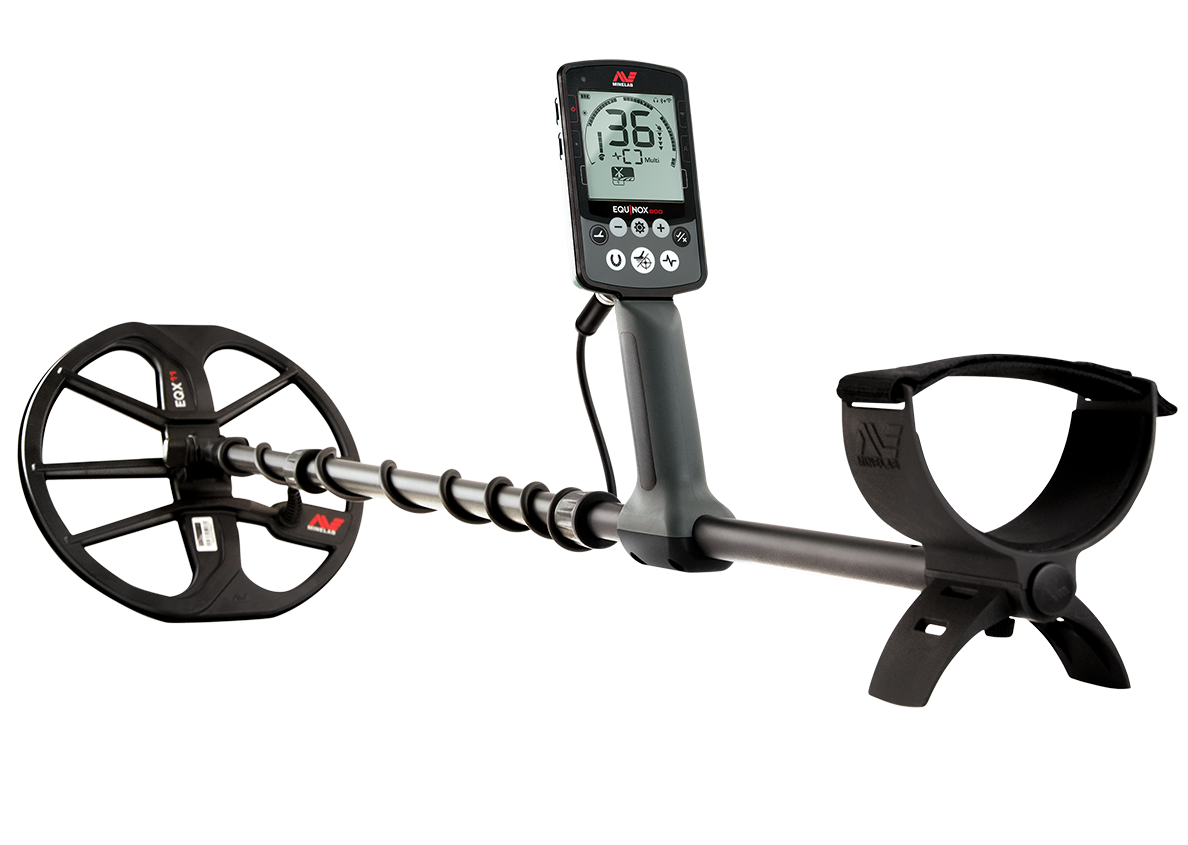One of the EQUINOX’s best features is its strong Target Identifications (TIDs) system. I’ve never seen a detector able to give such reliable TIDs at depth like the EQUINOX can. Not only in Multi-IQ (multi-frequency), but also in all single frequencies, and the TIDs for non-ferrous targets are stable across modes and frequencies. ..
So, for example; a copper coin giving a 21 TID in Field 1 Multi-IQ will still be a 21 if you switch to Park 1 10kHz, etc. However, this TID stability in the non-ferrous range doesn’t continue for the iron falsing that occurs. A Multi-IQ TID of 15 from an iron crown bottle cap becomes a 27 in 10kHz. Interestingly, this phenomenon opens an opportunity to practically discriminate tricky items that iron false on all metal detectors.
Crown Corks
Bottle crown caps (crown corks) are made of pressed steel and their round shape makes them very attractive to a metal detector’s magnetic field. Most detectors have the ability to discriminate (blank out) their false signal responses, but to do so will eliminate other desirable targets sharing the same TIDs. Crown caps give a TID range of 15 to 17 (sometimes wider), and this range includes many gold rings and all medieval early silver hammered pennies. So to reject the 15-17 range is not a sensible practical option.

Here is what's going on inside the detector (from Minelab's engineers):
With Multi-IQ, it’s possible to separately and more accurately calculate the two main parameters of a target which are relevant to discrimination. That is (a) how ‘conductive’ a target is, and (b) how ‘ferrous’ a target is. When only a single-frequency is used, the EQUINOX processing is limited to measuring only the phase of the target response, which is affected by both how ‘conductive’ the target is and how ‘ferrous’ it is.
For a non-ferrous target, the ‘ferrous’ component of the target is non-existent, so the same ‘conductive’ response can be effectively calculated with both Multi-IQ and single-frequency operation. Therefore the Target ID for a desirable coin is usually the same number, or very close. (Note: There can still be slight differences in the Target ID between Modes because of variations in the individual shape and material composition of the same type of targets.)
For a ferrous target, detected with a single-frequency, EQUINOX can’t tell exactly how ‘conductive’ it is because it’s mixed in with the “ferrous” nature of the target, but we can approximate from the phase response and determine a Target ID, in a similar way to how all single frequency detectors work. Multi-IQ can measure more accurately how ‘conductive’ an object is, independently of how ‘ferrous’ it is, to determine a target ID based on the real ‘conductive’ component, rather than an approximation. Therefore the Target ID will be a different number for undesirable crown caps when changing between Multi and 10kHz.
User Button Checking Program
A great way of implementing the User button is to save a program running in 10kHz, which then becomes your checking program to verify likely crown caps. For example, you can select Park 1 and change the frequency to 10kHz, using the Frequency button.
You don’t need to change any other Park 1 variables from the factory defaults. Just press and hold the User button until it beeps to acknowledge a saved program to the User button.
Technique
Search in your main mode (e.g. Field 1) running Multi-IQ. If you get a target you suspect to be an iron crown bottle cap, press the User button to switch to your 10kHz checking program. (The Park icon will show, without the Search Profile numbers below, along with the 10kHz frequency). If the target is a crown bottle cap, the TID will jump from 14/15 up into the mid 20s. This won’t happen for non-ferrous targets, their TIDs remain the same across all frequencies. (This technique will also work for some other large or deep targets like horseshoes and plough shears.)
EQUINOX 600
If you own the EQUINOX 600 you won’t have the option of saving a program to the User button, but you can still use the Frequency button to cycle to 10kHz to check, before cycling back to Multi-IQ. This is an alternative method to check crown caps that will work on EQUINOX models.
So, the next time you have a ‘suspect’ target, try switching between “Multi” and 10kHz to see if that improves your target identification process before you decide to dig.





















Comments
To make comments you must be logged in, please note comments will not display immediately due to moderation
Tried it and it works (for me in Belgium too ;-))
Thanks for posting!
Greetings,
Bob'ke